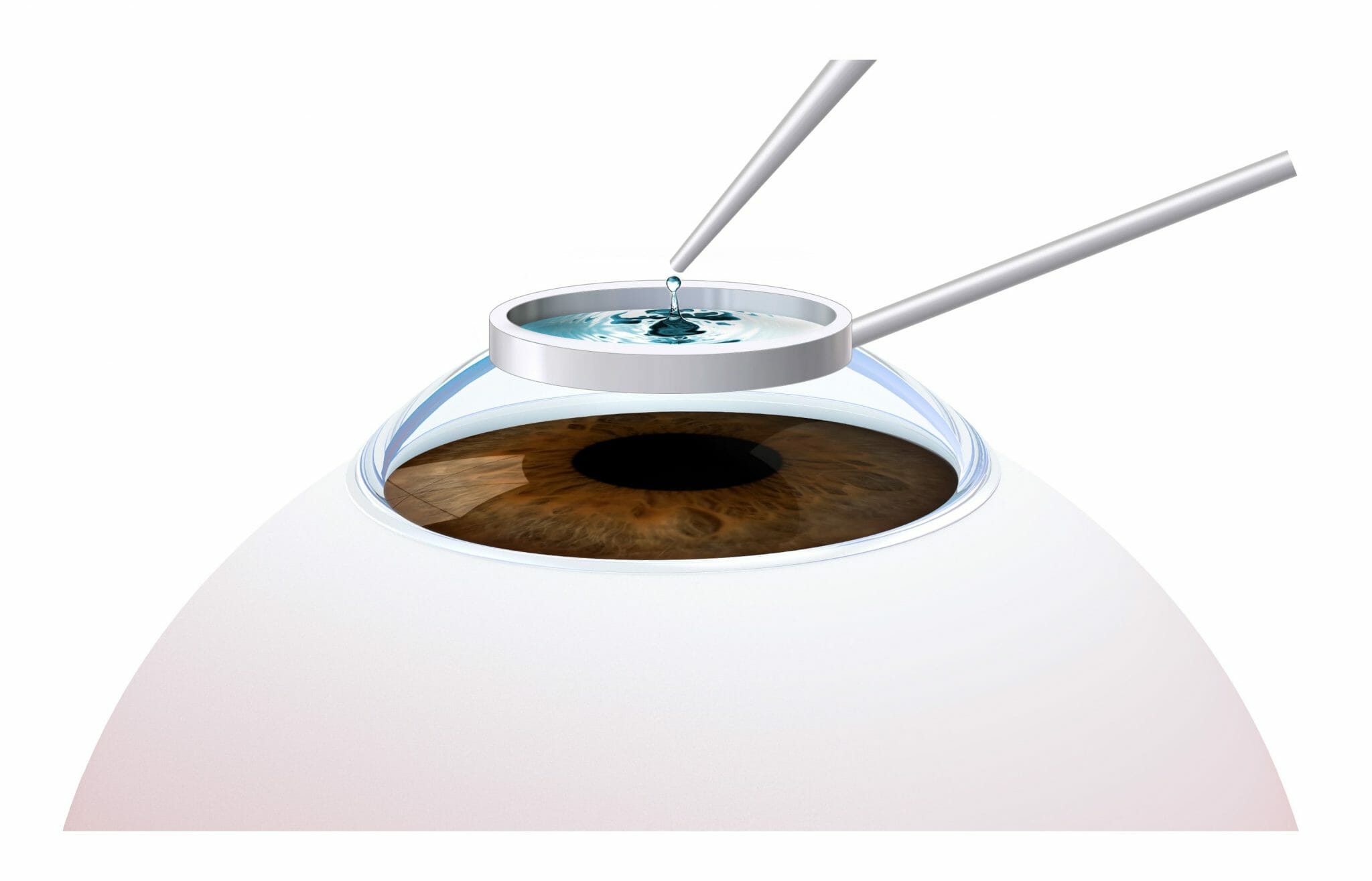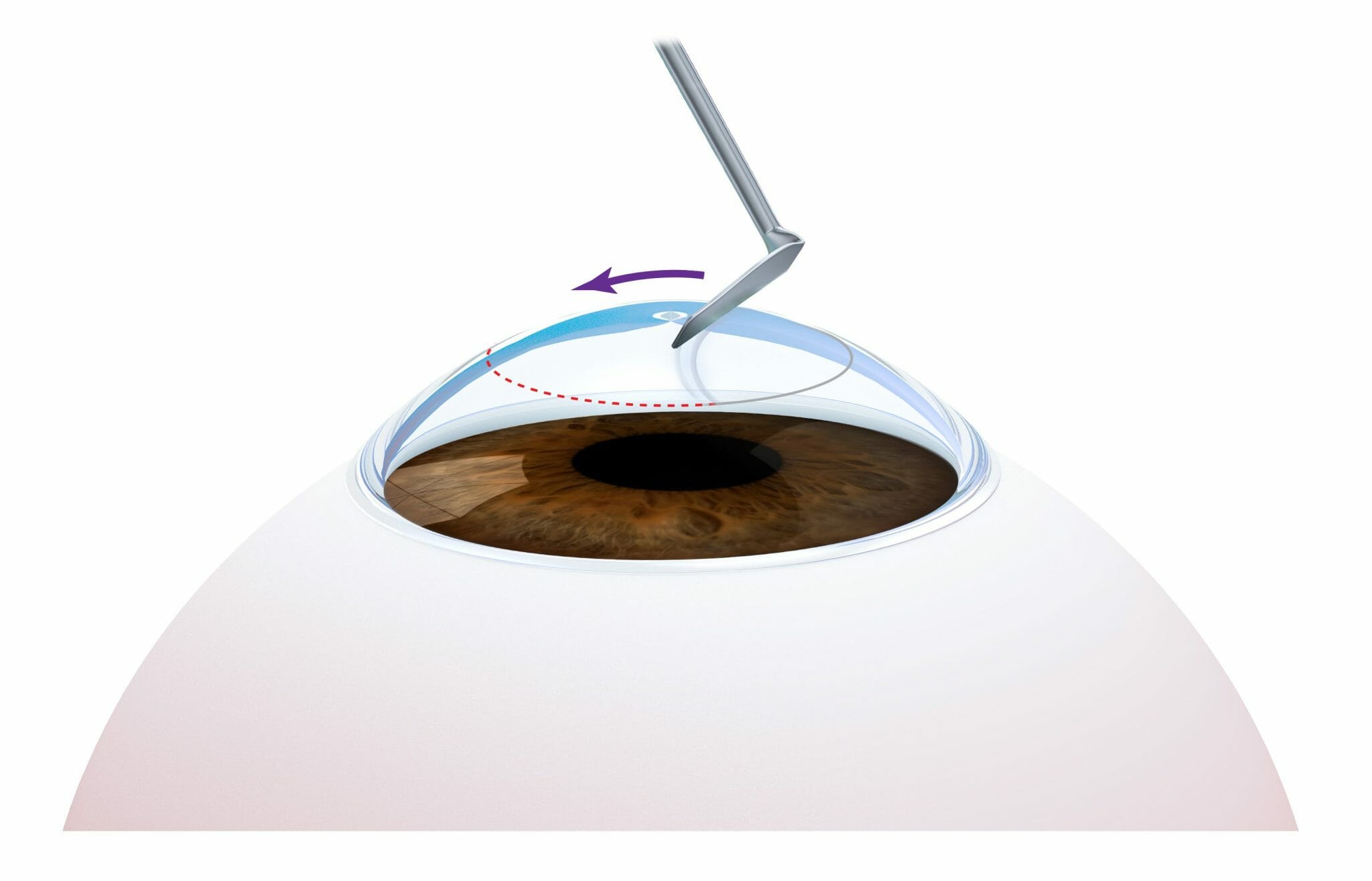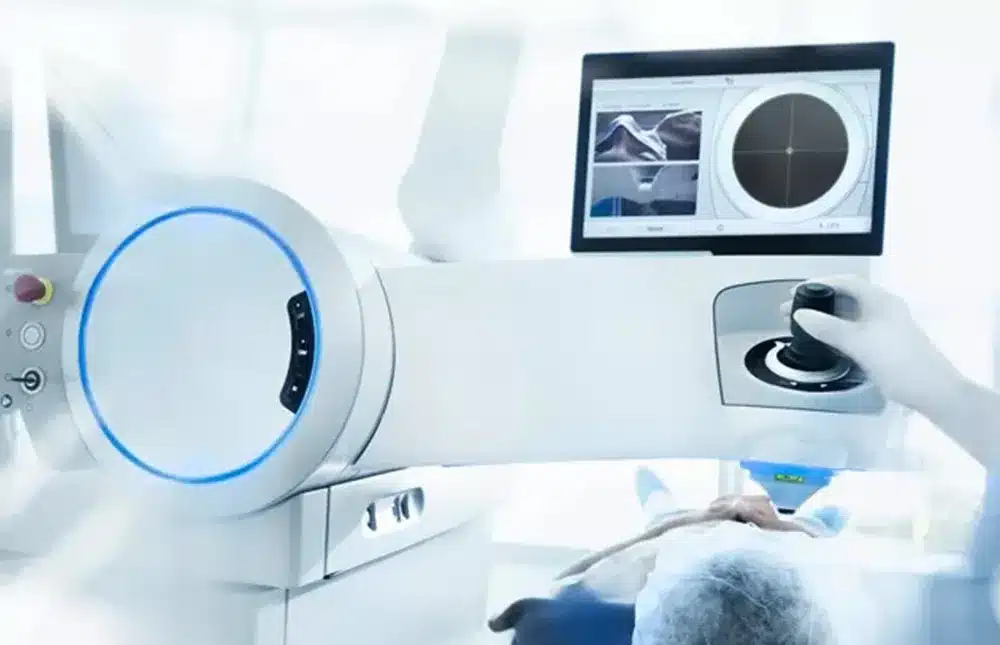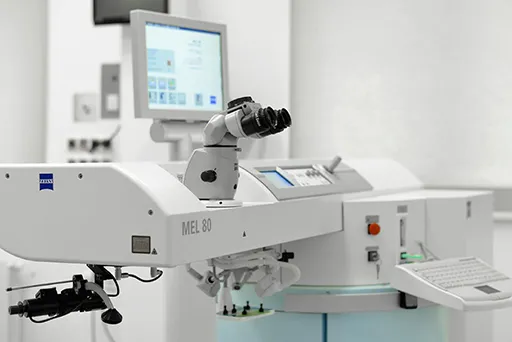TransPRK, Epi-LASIK, LASEK, PRK (Advanced Surface Ablation Procedures)
Advanced surface ablation procedures are no-flap, no-incision, surface-based alternatives to refractive surgery treatments like LASIK and ZEISS SMILE® Pro.
Trans-PRK is one of the most popular forms of advanced surface ablation where the corneal epithelium is removed by laser before the laser is then applied to the underlying stroma in order to reshape the corneal surface, all in a one-step procedure. There are no incisions made and no flap is being created throughout the procedure. This removes the risk of flap complications that could occur in flap-based procedures.
For patients with myopia, the laser is used to reshape the central corneal surface to allow accurate re-focusing of light entering the eye, and this corrects the refractive errors. For patients with hyperopia, the peripheral corneal surface is flattened instead to achieve good vision.
The eyes generally take about 3 to 5 days to heal after Trans-PRK surgery. During this time, varying degrees of pain or discomfort is usually experienced. The epithelium will heal on its own but a bandage contact lens is usually used to aid the healing process. Visual recovery takes a few weeks to months before refractive stability is achieved at about 3 to 6 months.
Who is it for?
Typically, Trans-PRK and other surface ablation procedures are performed on patients whose eyes are not suitable for LASIK or flap-based procedures. Majority of these patients have very thin or steep corneas in relation to the degree of their refractive error. Trans-PRK and surface ablation techniques are used to help preserve corneal strength and are therefore more suitable for these patients. In addition, patients who have pre-existing cornea surface problems like mild scarring or dry eyes would also benefit from a flapless procedure. Occasionally, it is also recommended for patients who participate regularly in contact or extreme sports such as boxing.
Advantages of Trans-PRK
- No flap related complications
- Cornea tissue saving
- Preservation of corneal strength
- Good outcome for lower degrees of myopia and astigmatism
Disadvantages of Trans-PRK
- Post-surgical discomfort of 3 to 5 days
- Longer use of eye medications
- Longer visual recovery
- Less predictable outcome for higher degrees of myopia and astigmatism
- Increased chances of regression
- Increased risk of corneal haze (cornea scarring)
- Slightly increased risk of corneal infections during the healing phase
What are the Types of Advanced Surface Ablation Procedures?
Advanced surface ablation techniques include Trans-PRK, Epi-LASIK, LASEK, and PRK. They differ in the method by which the corneal epithelial cells are removed before the laser procedure. Still, they all achieve equivalent visual acuity results.

In Epi-LASIK, the corneal epithelium is cleaved off using a blunt automated blade called an epitome.
EPI-LASIK (Epithelial laser in situ keratomileusis)
- The eye surgeon places a suction ring on the cornea.
- An epithelium separator is used to separate the surface epithelial layer from the underlying corneal tissue. The separator uses ultrasonic vibrations to create a flap.
- The suction ring is removed and the thin flap of loosened epithelium is moved to the side.
- The excimer laser is programmed to accurately reshape the curvature of your cornea surface and correct the existing refractive power.
- The epithelial flap is re-positioned and a soft contact lens is placed on the area, leaving the new epithelial cells to heal naturally.
LASEK (Laser assisted subepithelial keratectomy)
- The eye surgeon will gently press a circular bladed tool (a trephine) onto the centre of the eye. Alcohol is applied to loosen the epithelium cells within the trephine.
- The thin flap of loosened epithelium is lifted from the underlying corneal tissue and moved to the side.
- The excimer laser is programmed to accurately reshape the curvature of your cornea surface and correct the existing refractive power.
- The epithelial flap is re-positioned and a soft contact lens is placed on the area, leaving the new epithelial cells to heal naturally.

LASEK is a technique where a dilute alcohol solution is added to loosen the corneal epithelium, which is then gently brushed off and removed.

PRK is a surface ablation method where the corneal epithelium is removed manually with a blunt instrument.
PRK (Photorefractive keratectomy)
- The eye surgeon will apply numbing eye drops and use a lid speculum to help the eyelid stay open.
- The centre of the corneal epithelium is manually removed with a blunt surgical instrument.
- The excimer laser is programmed to accurately reshape the curvature of your cornea surface and correct the existing refractive power.
- The surgeon will cover the treated area with a bandage contact lens, leaving the new epithelial cells to self-heal and naturally grow back within 4 to 5 days.
In Trans-PRK, both removal of the corneal epithelium and the reshaping of the cornea surface is performed by a one step laser procedure, hence avoiding the need for epithelium removal using a mechanical device or alcohol. It is a more comfortable and expedient ASA procedure.
Payment Options
We Accept Cash, Nets, and Major Credit Cards:

– Installment Plans (Interest-Free) are available using UOB, OCBC, DBS/POSB credit cards. You can choose either 6 or 12 months of payment plans.
– Medisave is not applicable for LASIK surgeries
Other Laser Vision Correction Procedures
Meet Our Doctor

Dr Daphne Han
Medical Director and Senior Consultant
Ophthalmologist
MBBS (Melbourne), MMed (NUS), FRCS (Edinburgh), FAMS (Ophthalmology)
Subspecialty: Laser Vision Correction and Lens Implant Surgery




